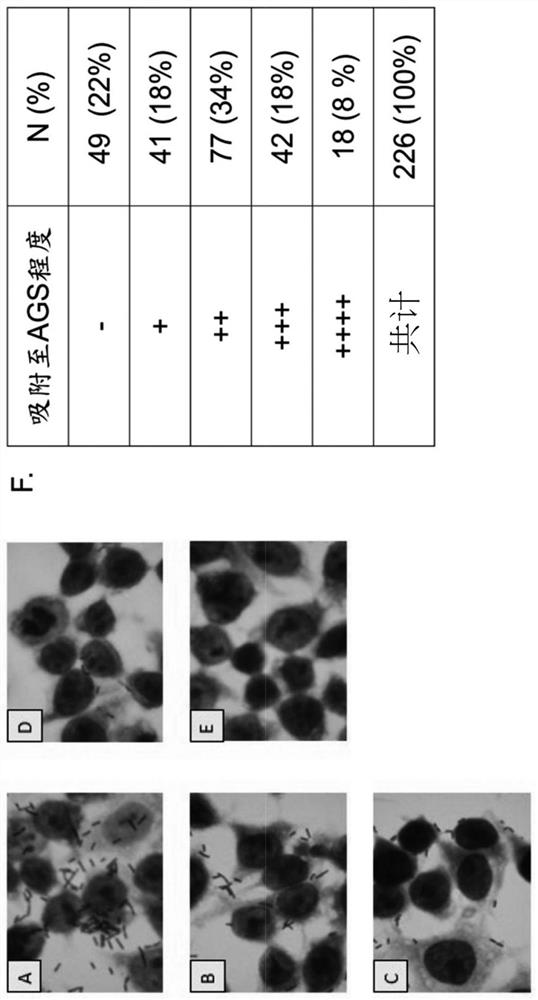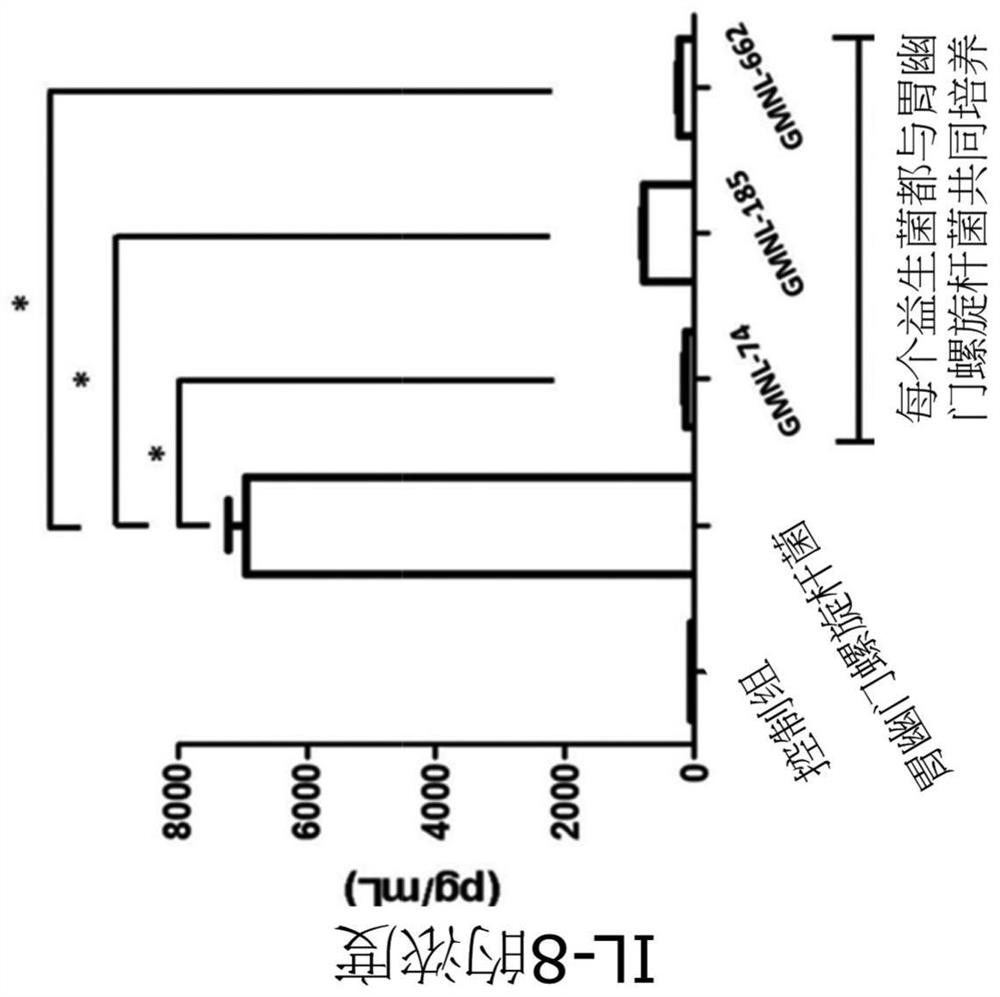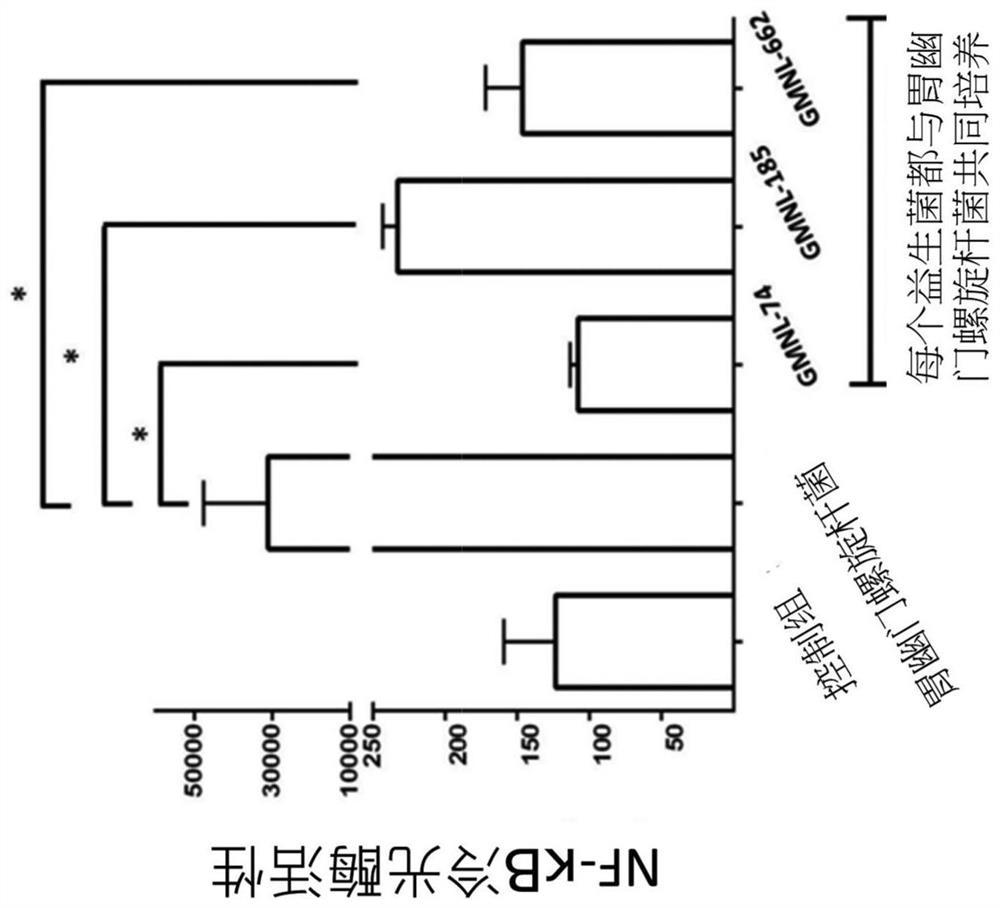A lactic acid bacteria composition for inhibiting gastric Helicobacter pylori-induced gastritis and its application
A technology of Helicobacter pylori and lactic acid bacteria, applied in the direction of Lactobacillus, drug combination, and microbial-based methods, can solve the problems of inability to eradicate Helicobacter pylori infection, abnormal taste, and drug resistance of Helicobacter pylori
- Summary
- Abstract
- Description
- Claims
- Application Information
AI Technical Summary
Problems solved by technology
Method used
Image
Examples
Embodiment 1
[0026] Example 1. Screening of lactic acid bacteria that can be highly adsorbed to human gastric cells (AGS)
[0027] Human gastric epithelial cells AGS (ATCC CRL 1739) were co-cultured with activated lactic acid bacteria (bacterial infection dose MOI: 100) for 2 hours, then washed with PBS to remove unadsorbed bacteria, and stained with Giemsa stain. The number of lactic acid bacteria adsorbed on human gastric epithelial cells (AGS) was observed under a microscope to evaluate the strength of the adsorption of the strains.
[0028] figure 1 Observe under the visual field of the oil immersion lens, if more than 40 lactic acid bacteria strains are adsorbed on the cells (such as figure 1 shown in A), expressed by "++++", which means that the ability to bind to the cells is the strongest; more than 20 lactic acid bacteria strains are adsorbed on the cells (such as figure 1 shown in middle B), represented by "+++"; more than 10 lactic acid bacteria strains adsorbed on the cells (...
Embodiment 2
[0030] Example 2. Screening of lactic acid bacteria that can highly inhibit Helicobacter pylori-induced IL-8 secretion and NF-κB transcription factor-related inflammatory response
[0031] Gastric epithelial cells infected with Helicobacter pylori were co-cultured with different strains of lactic acid bacteria (13 strains selected in the previous step) for 16 hours, and then the expression of IL-8 was analyzed by ELISA method, and NF-κB-luciferase After the (NF-κB luciferase) construct was transfected into the gastric epithelial cells, and lactic acid bacteria and Helicobacter pylori were added to co-culture for 12 hours, the activity of the inflammatory response caused by Helicobacter pylori could be known by analyzing the activity of NF-κB-luciferase. And further analysis whether the lactic acid bacteria have inhibitory effect.
[0032] The analysis results are shown in Table 1. It can be seen from the table that Lactobacillus rhamnosus GM-020 (also known as GMNL-74, present...
Embodiment 4
[0044] Embodiment four, the composition of three strains of lactic acid bacteria has the effect of additively inhibiting antibiotic-sensitive HP or multidrug-resistant HP strains
[0045] The ability of lactic acid bacteria to resist Helicobacter pylori strains was analyzed by agar-well diffusion method and antibacterial test. The H.pylori pathogenic strains used include: H.pylori BCRC 26695 (ATCC700392): wild-type strain, sensitive to antibiotics metronidazole (metronidazole) and clarithromycin (clarithromycin); H.pylori v633: Resistance to the antibiotic metronidazole (MZ R ) and clarithromycin resistant (CH R ); H.pylori v2311: resistant to the antibiotic metronidazole (MZ R ), but sensitive to clarithromycin (CH S ). H.pylori were placed under microaerobic conditions (85% N 2 , 10% CO 2 , 5%O 2 ) and Brucella blood agar plate (BAP) culture medium, the pathogenic bacteria were scraped off and the concentration of pathogenic bacteria was adjusted to 1×10 with phosphat...
PUM
 Login to View More
Login to View More Abstract
Description
Claims
Application Information
 Login to View More
Login to View More - R&D
- Intellectual Property
- Life Sciences
- Materials
- Tech Scout
- Unparalleled Data Quality
- Higher Quality Content
- 60% Fewer Hallucinations
Browse by: Latest US Patents, China's latest patents, Technical Efficacy Thesaurus, Application Domain, Technology Topic, Popular Technical Reports.
© 2025 PatSnap. All rights reserved.Legal|Privacy policy|Modern Slavery Act Transparency Statement|Sitemap|About US| Contact US: help@patsnap.com



